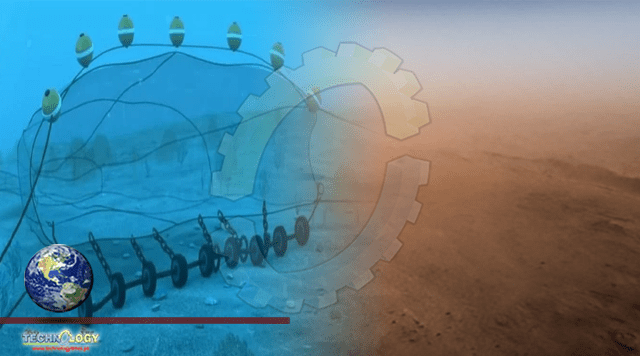Fishing trawlers that drag big nets along the ocean floor potentially release more largest carbon dioxide into the atmosphere as the world’s commercial aviation industry.

By CARLY CASSELLA
Fishing trawlers that drag big nets along the ocean floor potentially release more carbon dioxide into the atmosphere as the world’s commercial aviation industry.
The first study to estimate the real carbon footprint of bottom trawling globally has found this type of fishing releases roughly 1.47 billion tonnes of aqueous CO2 from the marine soil annually.
That number only represents 0.02 percent of all sedimentary carbon in the ocean – the largest pool of organic carbon on the planet – but as the authors point out, that’s up to 20 percent of the atmospheric CO2 absorbed by the ocean each year and is “comparable to estimates of carbon loss in terrestrial soils caused by farming.”
How much of that aqueous carbon makes its way up into our atmosphere is still unclear, but even if all those emissions remain in the marine environment, they can have detrimental effects on ocean acidification and biodiversity.
“The ocean floor is the world’s largest carbon storehouse. If we’re to succeed in stopping global warming, we must leave the carbon-rich seabed undisturbed,” argues aquatic ecologist Trisha Atwood of Utah State University.
“Yet every day, we are trawling the seafloor, depleting its biodiversity and mobilizing millennia-old carbon and thus exacerbating climate change. Our findings about the climate impacts of bottom trawling will make the activities on the ocean’s seabed hard to ignore in climate plans going forward.”
Satellite data from 2016 to 2019 shows industrial trawlers are dredging up roughly 1.3 percent of the seafloor each year, equivalent to roughly 5 million square kilometers of untouched seafloor (nearly 2 million square miles).
The worst carbon emissions occur in the first year after an area is trawled, mostly because of changes in the carbon metabolism of the sediment. After nine years of continuous trawling in the same spot, emissions stabilize to roughly 40 percent of their initial surge.
If the current rate of trawling is maintained, an international team of 26 researchers found it will take about 400 years to completely deplete the first top meter of all sedimentary carbon in our oceans.
Their comprehensive new model, which was published in advance of the 2021 United Nations (UN) Convention on Biological Diversity (CBD), supports the emerging idea that we should protect up to 30 percent of the ocean by 2030.
The authors say that not only will this save over 80 percent of ocean habitats for endangered marine species, but that it could also boost the productivity of fisheries and secure critical carbon stocks in our oceans.
“Rather than viewing protection versus extraction as a zero-sum game, we ask whether strategic conservation planning can simultaneously yield benefits for biodiversity conservation, food provisioning, and carbon storage,” the authors explain.
MPA lifelines
Marine protected areas (MPAs) can be effective ways to safeguard certain habitats and restore ocean biodiversity for ecosystems and industry. Unfortunately, as of March 2021, MPAs cover a mere 7 percent of the ocean, and only 2.7 percent of these areas are highly protected.
To figure out where future MPAs could prove most useful, researchers examined a range of conservation goals, including a reduction in species extinction risk and improvements in biodiversity, food provisions, and carbon storage.
The multi-faceted framework also considers how and where we can reduce human impact to reduce nutrient pollution, ocean warming, and acidification.
Compared to a business-as-usual scenario, this new model suggests that strict protections for just 21 percent of the ocean (including 43 percent of the coasts and 6 percent of the high seas) would provide 90 percent of all the possible biodiversity benefits examined.
This would increase the average protection of endangered species from just over 1 percent of their current range to between 82 and 87 percent.
The most irreplaceable ecosystems are those that reside in the exclusive economic zones (EEZs) of a nation’s coastline, where most fishing occurs, but even in the deep seas of Antarctica, the Indian Ocean, and the mid-Atlantic, MPAs could be implemented to great success, the authors say.
Of course, such protections will require global action and teamwork. By protecting just 4 percent of the ocean from bottom trawling, mostly within national waters, we could eliminate 90 percent of the current risk of carbon disturbance.
The countries with the greatest potential to mitigate climate change are those with the largest EEZs and industrial fisheries, including China’s EEZ, Europe’s Atlantic coastline, and other key areas where ocean upwelling occurs.
“Perhaps the most impressive and encouraging result is the enormous gain we can obtain for biodiversity conservation – if we carefully choose the location of strictly protected marine areas,” says marine ecologist David Mouillot from the Université de Montpellier in France.
“One notable priority for conservation is Antarctica, which currently has little protection, but is projected to host many vulnerable species in a near future due to climate change.”
Past attempts from environmentalists to create a large marine reserve in Antarctica have failed due to competing industry interests, but this new research suggests we can appease both groups to some extent.
If we strategically place MPAs in 28 percent of the ocean, the new blueprint shows we could increase food provisions by 5.9 million metric tonnes compared to what we’re doing now. Expanding MPAs to cover between 3.8 and 5.3 percent of the ocean would achieve 90 percent of this target.
“It’s simple: When overfishing and other damaging activities cease, marine life bounces back,” says marine and fisheries ecologist Reniel Cabral from the University of California Santa Barbara.
“After protections are put in place, the diversity and abundance of marine life increase over time, with measurable recovery occurring in as little as three years. Target species and large predators come back, and entire ecosystems are restored within MPAs. With time, the ocean can heal itself and again provide services to humankind.”
Originally published at Science alert